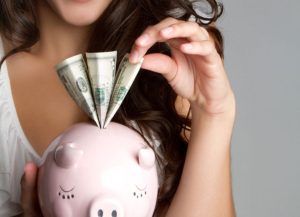Whether you are fresh out of college or steady in your career with a home, paying down debt affects just about everyone. According to government data as of June 2015 for American households, the average household’s credit card debt totals $15,609, the average household’s mortgage debt totals $156,706, and the average student loan debt is $35,000. Having debt has become the norm, but if you aren’t careful you can fall in deep.
The CGS Team is sharing 5 steps for paying down debt once and for all. Getting rid of your debt will not happen overnight, so patience is a necessity. Stay focused and always remember your end goal. Also, check out the article Don’t Let Debt Get You Down to get motivated about paying off your balances!
Step #1: Understand What You Owe
As with any financial matter, understanding where you stand is a very important step. When it comes to debt, understanding certain things like what you owe, what your interest rate is, and what the minimum you have to pay is will help you get closer to paying down your debt. Start by making a list of every debt you owe. Include student loans, credit cards, payday loans, mortgages, and any other debt form. Make a list of the following information for each debt:
The creditor’s name – Who do you make the payments to?
The total amount of debt you owe – What do you owe?
The available credit amount – What available credit do you have left?
The minimum payment required each month
The interest rate
The due date for your bill
This information will be invaluable when completing your other steps.
Step #2: Determine What You Can Pay
The best way to determine what you can pay towards all of your debts each month is by having a budget. If you already track your income and expenses, then you should know what additional amounts are remaining each month (if any). Keep this information handy as it will be necessary when you create a plan to tackle your debt.
If you don’t have a budget, or don’t have a written account of your income and expenses on a monthly basis, get it done ASAP! Check out the CGS Personalized Budget Plans and let CGS Founder Raya help you get a budget going.
Step #3: Talk to Your Lenders
Credit card debt is one of the worst debts you can have. Referred to as “unsecured” debt, credit card debt comes with extremely high interest rates and is not protected by collateral, such as a house for a mortgage loan. Loans, with the exception of personal, typically have lower interest rates and are paid off over time for the purchase of an object. Since credit card debt is basically expensive borrowed cash, it can seem impossible to get out of.
Call your credit card companies and explain your situation. Let them know that you are struggling with your current debts and ask if there is anything they can do. If you have been timely with your payments, some lenders may reduce your interest rate temporarily or waive late payments for a short amount of time.
If you are stern with not spending, you can open a new credit card (with an interest free promotion) and transfer some debt to this new card. This option should only be used if you can control your use of credit.
Step #4: Have a Written Plan
There are a few different plans for paying off debt. Are you going to knock out the debt with the lowest balance first? What about taking care of the debt with the highest interest rate? Decide on the right plan for you and stick to it. If you want the satisfaction of quick results, pay of the debts that have the lowest balances first.
Your debt plan should list all of your debts according to balance. Put any extra money you can into paying off the lowest balance debt (while still making sure to pay the minimum payments on the other debts). Once that debt is paid, move on to the next lowest debt, and so on. Continue this as long as you can. The same strategy will apply to whichever plan you have. Read Strategies for Knocking Out Debt for more ideas.
Step #5: Stop Using Your Debt
In order for the 4 steps listed above to work, you absolutely have to stop using your credit cards, taking out new loans, or spending excess money instead of paying your debts. It can be extremely tempting to reward yourself for paying off a balance, but all of your hard work can be tarnished in a matter of minutes, literally.
If you know that you can’t stop treating yourself to a weekly latte or one wardrobe item a month, then include these amounts in your budget. Give yourself a set amount to spend each month and only spend that amount. Anything extra should go to your debt plan. This is the hardest step of all, because anything could come up. Do your best to avoid putting emergencies on credit cards, or adding balances to accounts that are already paid off.
Related: My Debt-Free Story and the Biggest Takeaways
Getting out of debt is not impossible. No matter how hard it seems in the beginning, you can get through it. The CGS Team believes in you and we are here to help anyway we can. Leave a comment below with any questions or concerns about debt. If you have any experience with paying off debt, please share your tips and feedback as well. We encourage discussion!






1 thought on “5 Steps for Paying Down Debt”
I’ve never attempted to contact lenders before, but I imagine that they would rather receive some form of payment over no payment at all… great information in this article!